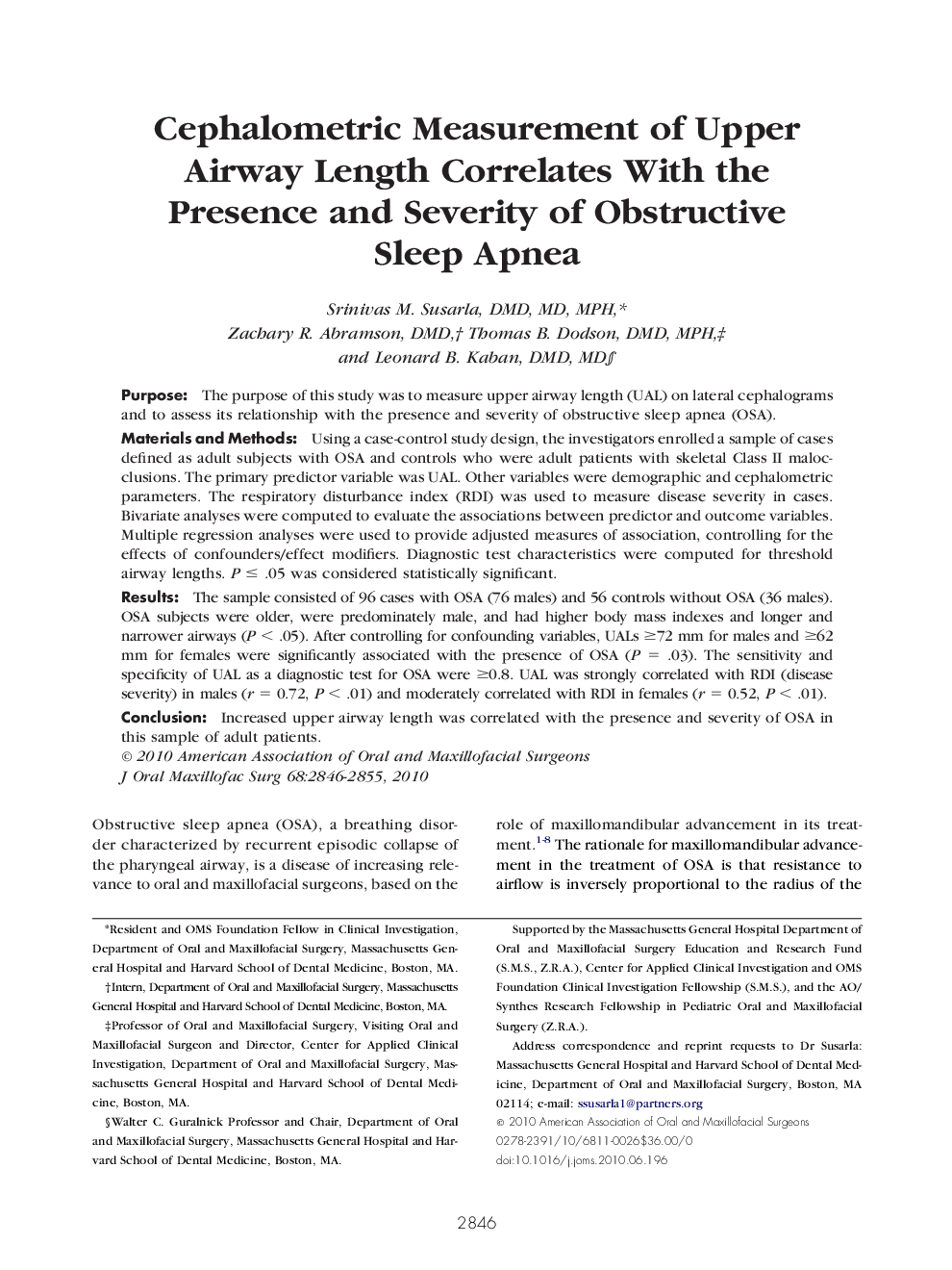| Article ID | Journal | Published Year | Pages | File Type |
|---|---|---|---|---|
| 3154913 | Journal of Oral and Maxillofacial Surgery | 2010 | 10 Pages |
PurposeThe purpose of this study was to measure upper airway length (UAL) on lateral cephalograms and to assess its relationship with the presence and severity of obstructive sleep apnea (OSA).Materials and MethodsUsing a case-control study design, the investigators enrolled a sample of cases defined as adult subjects with OSA and controls who were adult patients with skeletal Class II malocclusions. The primary predictor variable was UAL. Other variables were demographic and cephalometric parameters. The respiratory disturbance index (RDI) was used to measure disease severity in cases. Bivariate analyses were computed to evaluate the associations between predictor and outcome variables. Multiple regression analyses were used to provide adjusted measures of association, controlling for the effects of confounders/effect modifiers. Diagnostic test characteristics were computed for threshold airway lengths. P ≤ .05 was considered statistically significant.ResultsThe sample consisted of 96 cases with OSA (76 males) and 56 controls without OSA (36 males). OSA subjects were older, were predominately male, and had higher body mass indexes and longer and narrower airways (P < .05). After controlling for confounding variables, UALs ≥72 mm for males and ≥62 mm for females were significantly associated with the presence of OSA (P = .03). The sensitivity and specificity of UAL as a diagnostic test for OSA were ≥0.8. UAL was strongly correlated with RDI (disease severity) in males (r = 0.72, P < .01) and moderately correlated with RDI in females (r = 0.52, P < .01).ConclusionIncreased upper airway length was correlated with the presence and severity of OSA in this sample of adult patients.
